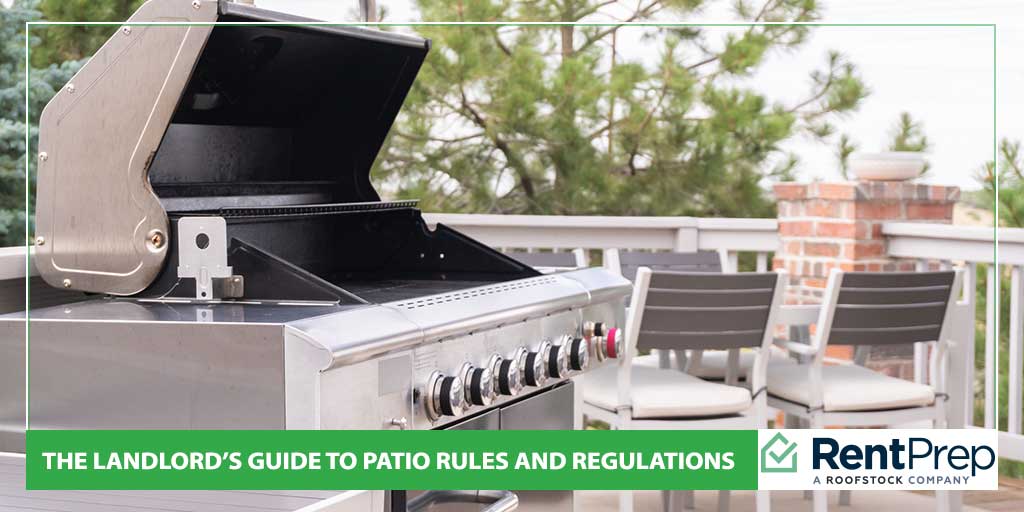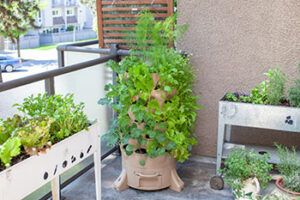
Spring and summer are the seasons when tenants love to spend time outside, whether it’s enjoying the warm weather, hosting a cookout or encouraging their kids to “go play.” As a landlord, you want your tenants to enjoy the rental property, including the outdoor space, but sometimes the rules and regulations for patios and decks are not specified in the lease agreement, leading to problems.
Here are 4 points of interest to always include in your lease agreement or a patio addendum so that you and your tenant won’t have any miscommunication about what’s allowed and what is against the rules.
1. Furniture

It may seem like a no-brainer, but it’s often surprising what kind of things tenants will put out on a patio as patio furniture. From sofas to dining room furniture to boards and bricks, makeshift patio furniture can lead to unsightly curb appeal and might even be dangerous. In the lease agreement addendum, it’s a good idea to specify that patio furniture or outdoor/garden furniture in good condition is the only allowable type. Take it a step further and clarify that any type of indoor furniture is not allowed outside on the patio.
You may be asking yourself what the big deal is to have improper furniture on the patio. Indoor furniture can be damaged by rain, sprinklers or pests. If the furniture is moved in and out frequently, water and pests can be transported inside. If dilapidated, the furniture may pose a health hazard with the possibility of broken, rusted edges injuring someone. Finally, non-patio furniture simply looks bad.
2. Grills
Regulations on whether or not tenants can grill on the patio should be made to ensure the maximum safety for both tenants and your property. There are many cases of grills placed too close to a home, and the heat causes siding to melt, or sparks start a fire. Many landlords require tenants to place grills at least 10 to 15 feet from any exterior walls. You may also want to include language about the use or storage of any type of open flame grills, such as storing propane tanks indoors.
If you are putting restrictions on grills or banning open flame grills completely, it’s a good idea to spell out the consequences of violating the policy. An example of this might be that a first warning results in a fine and a second warning results in an official notice to comply (get rid of the grill) or quit the tenancy.
3. Plants and Planters

Allowing tenants to grow plants on the patio is a wonderful way to make a rental property feel more like home. Some landlords don’t want any planters or containers on the patio, while other landlords feel that it’s just fine as long as tenants follow the rules about them in the lease agreement. From container gardening to simply adding a touch of nature to an otherwise bare space, greening up a patio should come with guidelines and restrictions.
Examples of regulations for plants on the patio is setting a maximum size for the pot, asking that residents use natural dirt and planting material or that pots should not be placed in high traffic areas. The pots and plants should not detract from the appearance of the rental property and plants should be well cared for. Also, you should include in your lease addendum the requirement for tenants to use a protector under all pots to prevent water and dirt from staining the patio.
4. Décor
Many tenants want to put their own personal touches on the rental property and that includes the patio. However, what one person considers attractive and decorative may be awful to another. Also, adding décor may unintentionally damage the patio area. While landlords cannot list every single allowable décor, there should be some general guidelines on what tenants can and cannot do.
Examples of patio décor that you should be aware of include candles, tiki torches, rope lights, or other heat or fire source. Other examples include signage or other banners. Using the patio as storage should also be prohibited, so include language about what you will and won’t allow when it comes to laundry lines, bikes, mopeds, large children’s toys and more.
Let the Lease Agreement be the Guide
When it comes to patios at your rental property, whether it’s a single family home or an apartment complex, you’d be surprised at what kind of things tenants will do that may damage the property, affect other tenants and neighbors or simply look bad and detract from the appeal of your real estate investment. Putting detailed language in the lease agreement is the best way to make sure that you and your tenant both know what is allowed and what isn’t when it comes to patios.

